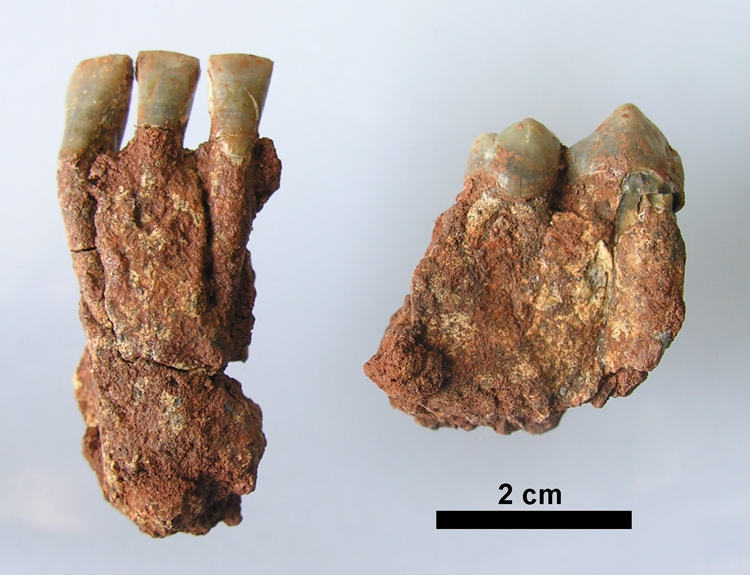China was an ancient-ape paradise
Excavations uncover oldest known ancestral gibbon remains
COLUMBUS, Ohio — Scientists excavating near the edge of a plateau in southern China that features a precipitous 20-meter drop have uncovered a trove of ancient ape fossils, including the oldest-known remains of ancestral gibbons.

These finds consist of two complete teeth from a fossil ape genus known as Yuanmoupithecus. Fragmentary bones found earlier had been used to suggest that this creature evolved from East African apes that lived more than 10 million years ago.
The newly discovered fossil teeth dash that hypothesis, says Terry Harrison of New YorkUniversity. The Chinese specimens show clear similarities to the teeth of modern gibbons, small Asian apes that live in rainforests.
Analyses of reversals of the Earth’s magnetic field visible in soil layers bracketing the finds place the fossils’ age at about 9 million years. DNA studies of living apes suggest that ancestral gibbons first emerged around 10.5 million years ago, not long before the appearance of Yuanmoupithecus in southern China.
“This is an important discovery,” Harrison says. “I’ve long hoped to find an early gibbon ancestor.”
He described the fossils, which he and a team of Chinese investigators unearthed, on April 11 at the annual meeting of the American Association of Physical Anthropologists.
Over the past 30 years, several fossil finds initially described as ancestral gibbons have failed to pan out upon closer inspection. The new finds appear to be immune to such criticism, in Harrison’s view.
Harrison and his colleagues spent five weeks, beginning in December 2006, excavating near a Chinese fossil site known as Leilao. Since 1996, excavations there have yielded more than 300 fossils from Yuanmoupithecus and another poorly understood ancient ape, Lufengpithecus, which lived in East Asia. Lufengpithecus has already been dated at between 10 million and 7 million years old.
Harrison’s team also recovered 99 Lufengpithecus fossils, an unusually large number for any single ancient-ape excavation. These finds mainly included jaw fragments and individual teeth but also finger bones and an upper-leg bone.
Harrison preliminarily classifies Lufengpithecus as an ancestor of orangutans, another Asian ape. Lufengpithecus possessed long, curved fingers that look much like those of orangutans, he says.
Southern China and southeastern Asia probably served as a safe haven for small-bodied ancient apes such as Yuanmoupithecus and Lufengpithecus, Harrison proposes. Earlier geological data indicated that land movements and the onset of monsoon rains throughout that region by 10 million years ago created dense forests favored by such apes.
The evolutionary status of fossil finds often sparks differences of opinion. John Fleagle of StonyBrookUniversity in New York agrees with Harrison’s conclusions and calls the linking of Yuanmoupithecus to gibbons “a very exciting discovery.”
But David Begun of the University of Toronto awaits further fossil discoveries in China before he accepts Harrison’s views on either Yuanmoupithecus or Lufengpithecus. “It’s fair to say that the jury is still out,” he remarks.







